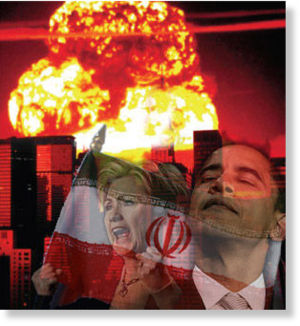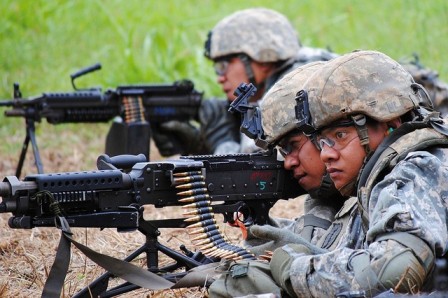


For those who feel that 13 is an unlucky number, the belief was vindicated on September 13, considering that a new liquidity injection – a massive infusion of freshly printed and essentially worthless money into the global economy – was announced in the US on the day. Federal Reserve chairman Ben Bernanke said that, as a third round of quantitative easing (QE3), the US would beef up its long-term securities holdings by open-ended purchases of $40b of mortgage debt.
No information concerning the total to be thrown into QE3 was supplied. Instead, Bernanke made it clear that Operation Twist – a program to swap $667b of short-term debt for long-term securities – would continue. Earlier, the swap fund used to measure $400b, meaning that, in fact, Bernanke pledged to give it an appreciable boost.
He also sent a portion of cheering news to the US financial sector by telling that the unprecedentedly low federal funds rate – 0 to 0.25% – will stay in effect at least through mid-2015 rather than till the end of 2014 as decided earlier. Knowing what exactly constitutes the main US export should give a reasonable idea of what the QE3 plan promises worldwide.
The past two rounds of quantitative easing led to the infusion of $1.2 trillion into the global economy and, by September 2012, drove the US debt to the $16 trillion mark. Facing the dollar tide, the European Central Bank had to similarly resort to massive emission. The results were the ability of Greece to steer clear of the anticipated default, and, from a wider perspective, the sustained PIIGS buoyancy, plus the growing volatility of the energy and commodity markets. Importantly, the price of gold climbed steadily against the background.
The launch of QE3 echoed with practically the same trends:
• The price of gold added 3.3% overnight on September 13-14, increasing from $1,718 to $1,772 per troy ounce;
• Crude prices started to rise, with Brent’s $2 per barrel jump being a minor sign of what the future holds and with the cost of natural gas trailing;
• The Euro to US dollar ratio went up, breaking the 1.3 ceiling and stabilizing at 1.303 early on September 14;
• Food and commodities began to post scary readings;
• Benchmark indexes rocketed, prompting speculation that a new bubble was being inflated.
The European Central Bank has no option but to pick up the challenge in the depreciation race, least the strengthening of Euro renders the EU exports uncompetitive and sends Europe into remission. Politically, the European Central Bank’s turn to money-printing will imminently tell on the living standards across the EU, meaning that the socialists and nationalists who already do exceptionally well in every European poll will draw even more favors from the constituencies.
Finally, the gap between the EU donor-countries and their financially embarrassed peers will widen to the point where the collapse of the Eurozone becomes probable tomorrow.
In contrast, gains may await Russia and China. The Russian budget will swell on oil revenues, and the depreciation of the US dollar will help the Chinese exports remain competitive regardless of the rising cost of labor in China. Iran, a crucial fuel supplier to China and India, stands to benefit from the developments on the tactical level as both countries pay for oil imports from Iran in their national currencies and have stable energy appetites.
* * *
What the recurrent US liquidity dumps clearly provoke in the outside world are local armed conflicts. The Arab Spring was a completely predictable consequence of the first and second rounds of the US quantitative easing.
The recent outbreaks of unrest – regime changes in Egypt and Tunisia, the civil war and intervention in Libya, the mounting pressure on Syria, the slide towards a war against Iran, the UN blessing to carve up Sudan, etc – are attributable not so much to the raging global crisis as to the attempts to overcome it by expropriating the countries which are not responsible for the downturn but own the resources on which the West’s liquidity can be spent.
These are the countries dragged one after another into latent economic wars in which international sanctions serve as a weapon or into large-scale armed conflicts with extremist and terrorist groups.
The impression at the moment is that the Federal Reserve’s latest liquidity injection is supposed to be accompanied by a new Arab world destabilization which can, as necessary, be cited as a pretext for US military interventions. Bernanke’s statement coincided in time with the September 12-14 tide of anti-American protests in North Africa, the Middle East, India, Pakistan, and other parts of the world.
Consider it random if you will – indeed, the US enters a new fiscal year in October and Bernanke could not delay going public with the plans – but the synchronism of the reaction across the Western media over the inflammatory movie posted on YouTube evokes serious suspicions.
It seems improbable that journalists in every media outlet in the West constantly screen YouTube for anti-Islamic pieces and, discovering one, have all the reasons in the world to let it overshadow all other themes.
In fact, the fairly miserable movie appeared on YouTube back in July, and was available for quite some time, prompting virtually no response. It grabbed the headlines and ignited mass protests only after being re-posted in Arabic, and after the author was identified as Nakoula Basseley Nakoula, an Egyptian Christian resident in the US. It contributes to the escalation that YouTube staunchly refuses to delete the movie.
The US naval forces headed for the Mediterranean in the wake of the killing of the US ambassador by the mob in Libya. Earlier US ships were reported to be en route to the shores of Syria. In a move indicative of upcoming hostilities, the US Department of State closed the US embassies in a number of countries. Overall, too many elements fit neatly into the picture for it to be explained away as a random combination of circumstances.
* * *
The efforts to mitigate the corrosive impact of financial speculations on the world economy by launching new rounds of speculations make the world increasingly explosive, and injecting liquidity to beat the crisis look as if someone is trying to extinguish fire by pouring oil instead of water. The liquidity, once infused, has to be absorbed via some mechanism, since otherwise hyperinflation in the world where all national currencies are tied to the US dollar simply paralyzes the global economy.
Austerity programs can serve the purpose, but the ride ends quickly as the total amount of money circulating globally exceeds the world GDP by a factor of tens. Notably, the proliferation of dubious derivatives makes things even worse. As of 2008, the bulk of financial instruments of all sorts compared to the world GDP was close to 20:1, and, no doubt, the 2012 situation is much severer.
The biggest problem is that, as history shows with utmost clarity, wars are the only type of outcome of global crises stemming from the very nature of capitalism. Therefore, if the policy of quantitative easing continues untamed, a new war is only a question of when and where…
Martin KUKSHA, Strategic Culture Foundation
